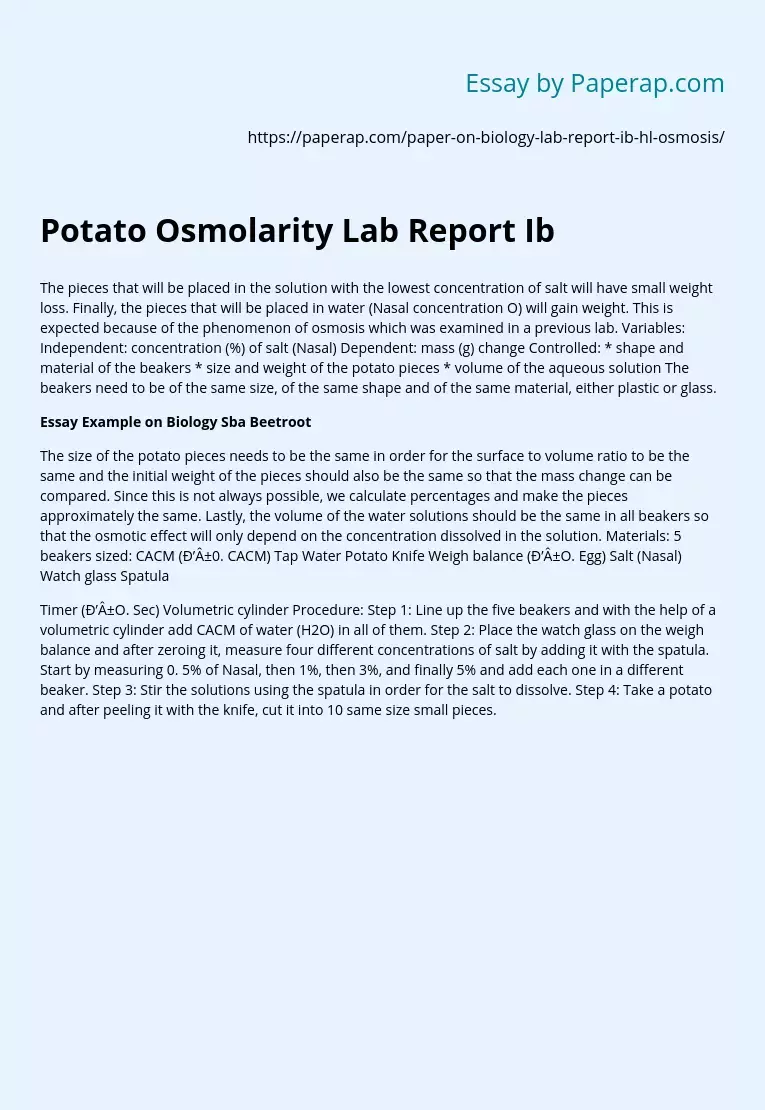Potato Osmolarity Lab Report Ib
The pieces that will be placed in the solution with the lowest concentration of salt will have small weight loss. Finally, the pieces that will be placed in water (Nasal concentration O) will gain weight. This is expected because of the phenomenon of osmosis which was examined in a previous lab. Variables: Independent: concentration (%) of salt (Nasal) Dependent: mass (g) change Controlled: * shape and material of the beakers * size and weight of the potato pieces * volume of the aqueous solution The beakers need to be of the same size, of the same shape and of the same material, either plastic or glass.
Essay Example on Biology Sba Beetroot
The size of the potato pieces needs to be the same in order for the surface to volume ratio to be the same and the initial weight of the pieces should also be the same so that the mass change can be compared. Since this is not always possible, we calculate percentages and make the pieces approximately the same.
Lastly, the volume of the water solutions should be the same in all beakers so that the osmotic effect will only depend on the concentration dissolved in the solution. Materials: 5 beakers sized: CACM (В±0. CACM) Tap Water Potato Knife Weigh balance (В±O. Egg) Salt (Nasal) Watch glass Spatula
Timer (В±O. Sec) Volumetric cylinder Procedure: Step 1: Line up the five beakers and with the help of a volumetric cylinder add CACM of water (H2O) in all of them. Step 2: Place the watch glass on the weigh balance and after zeroing it, measure four different concentrations of salt by adding it with the spatula.
Start by measuring 0. 5% of Nasal, then 1%, then 3%, and finally 5% and add each one in a different beaker. Step 3: Stir the solutions using the spatula in order for the salt to dissolve. Step 4: Take a potato and after peeling it with the knife, cut it into 10 same size small pieces.
Potato Osmolarity Lab Report Ib. (2019, Nov 27). Retrieved from https://paperap.com/paper-on-biology-lab-report-ib-hl-osmosis/

